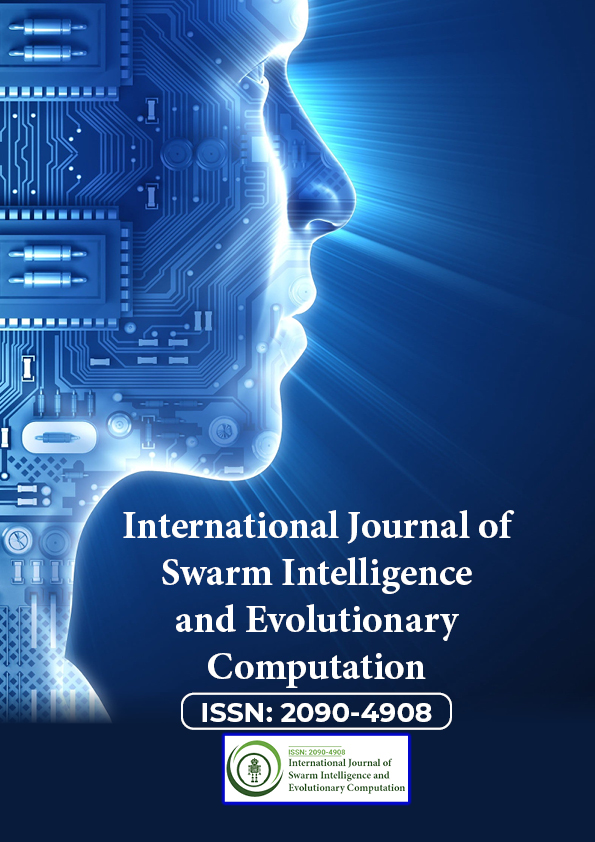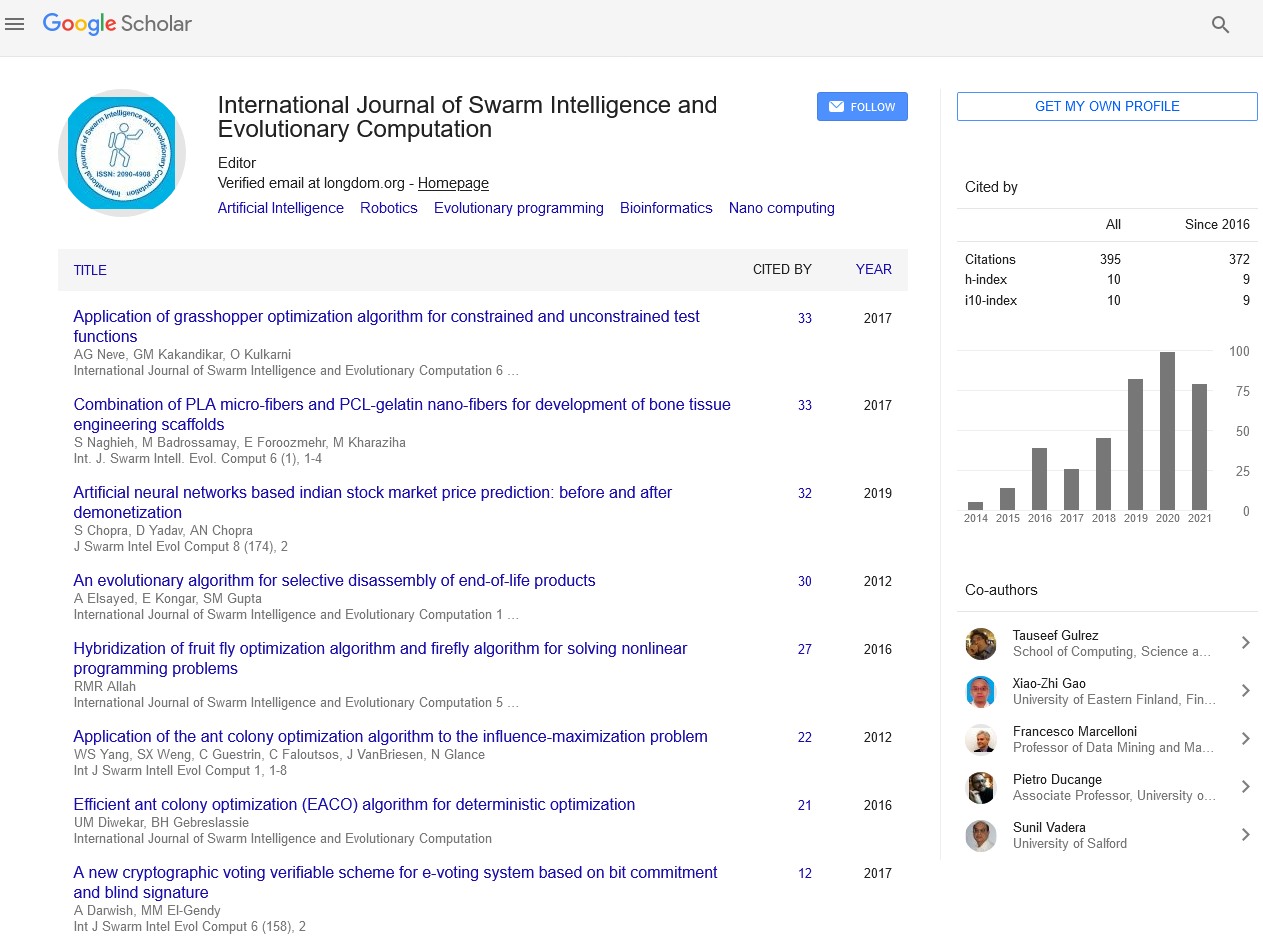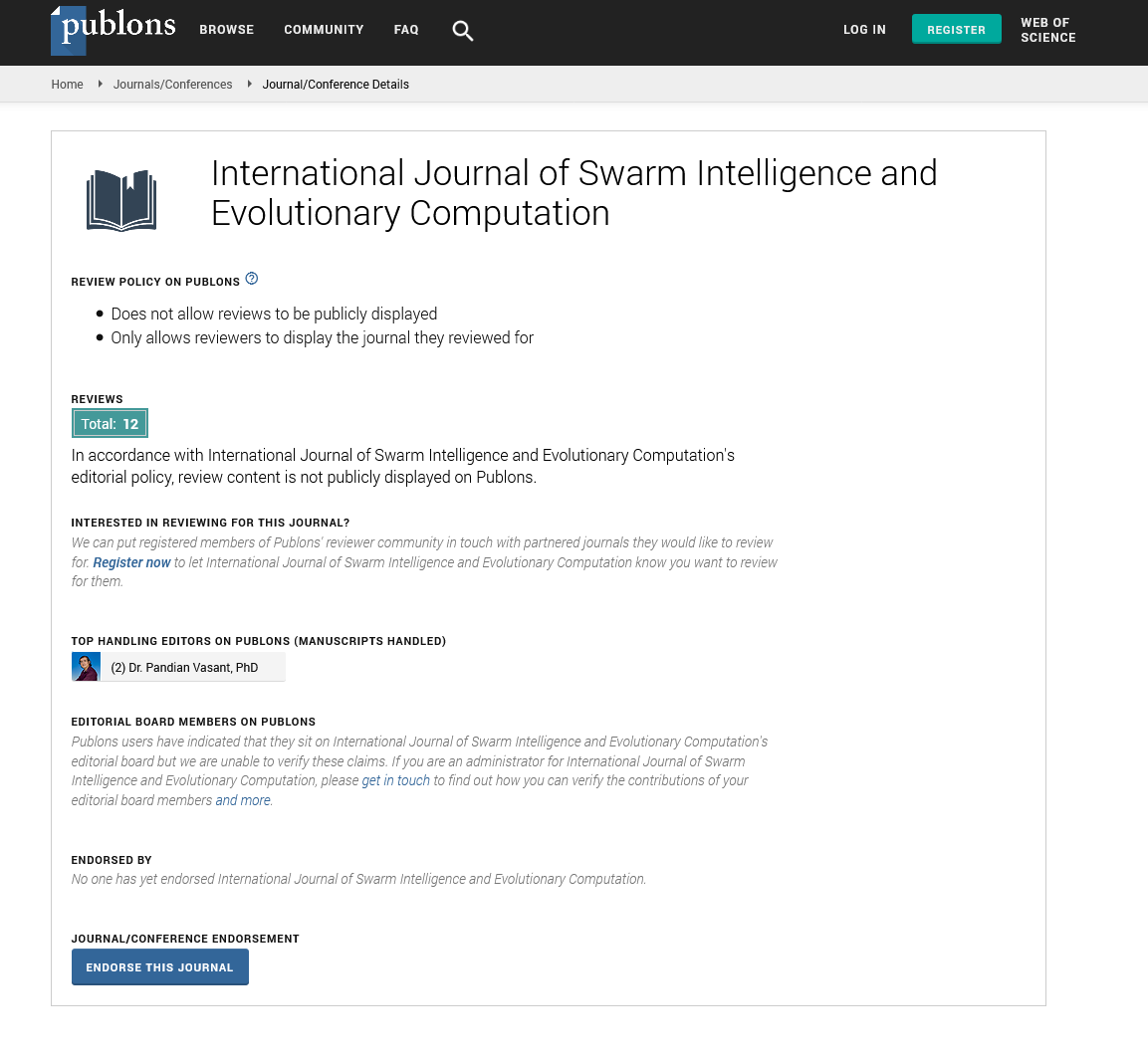Indexed In
- Genamics JournalSeek
- RefSeek
- Hamdard University
- EBSCO A-Z
- OCLC- WorldCat
- Publons
- Euro Pub
- Google Scholar
Useful Links
Share This Page
Journal Flyer

Open Access Journals
- Agri and Aquaculture
- Biochemistry
- Bioinformatics & Systems Biology
- Business & Management
- Chemistry
- Clinical Sciences
- Engineering
- Food & Nutrition
- General Science
- Genetics & Molecular Biology
- Immunology & Microbiology
- Medical Sciences
- Neuroscience & Psychology
- Nursing & Health Care
- Pharmaceutical Sciences
Perspective - (2025) Volume 14, Issue 2
The Social Systems Analogy: Swarm Intelligence as a Metaphor for Understanding Human Collective Behavior
Wan lin*Received: 18-Apr-2025, Manuscript No. SIEC-25-28705; Editor assigned: 21-Apr-2025, Pre QC No. SIEC-25-28705 (PQ); Reviewed: 05-May-2025, QC No. SIEC-25-28705; Revised: 12-May-2025, Manuscript No. SIEC-25-28705 (R); Published: 19-May-2025, DOI: 157927986@irob.obot.kaist.ac.kr
Description
Swarm Intelligence offers a powerful metaphor for understanding and modeling human collective behavior. While SI algorithms are designed to solve computational problems, the underlying principles of swarm systems – decentralized control, local interaction, and emergent behavior – can also be applied to analyze and understand how human societies function. This perspective highlights the potential for cross-disciplinary insights and the ability to apply concepts from AI to the study of social phenomena.
For example, the way that ant colonies allocate tasks and resources can provide insights into how human organizations can be structured to maximize efficiency and productivity. In an ant colony, different groups of ants perform different tasks, such as foraging, nest building, and brood care, with minimal central coordination. This self-organized division of labor can be a valuable model for designing more flexible and adaptive human organizations. The way that bird flocks coordinate their movements can offer clues about how human crowds behave in emergencies, and how to design better evacuation strategies. The emergent patterns of movement in a bird flock, where individuals adjust their direction and speed based on the behavior of their neighbors, can help us understand how information and influence spread through human crowds, and how to prevent dangerous stampedes.
Understanding SI provides valuable insights into human social dynamics, including crowd behavior, organizational decision-making, and online community interactions. By recognizing patterns of decentralized coordination and emergent behavior, we can design systems and structures that enhance collaboration and collective problem-solving.
The way that social insects make collective decisions can inform our understanding of how opinions form and spread in human societies, and how to design more effective democratic processes. The collective decision-making process in a bee swarm, where scout bees explore potential nest sites and communicate their findings to the rest of the swarm through the waggle dance, provides a fascinating example of how a group can reach a consensus without centralized leadership. This analogy between swarm systems and human social systems is not perfect. Human societies are far more complex than any natural swarm, and human behavior is influenced by a wide range of factors that are not present in insect colonies or bird flocks, such as culture, language, and individual psychology.
However, the basic principles of Swarm Intelligence can still provide valuable insights into some aspects of human collective behavior. By viewing human societies through the lens of Swarm Intelligence, we can gain a new perspective on how order and structure can emerge from decentralized interactions, how information can be processed and disseminated in social networks, and how collective decisions can be made without central control. This can lead to new ways of thinking about social organization, political systems, and economic interactions.
In conclusion, Swarm Intelligence, viewed as a social systems analogy, provides a powerful metaphor for understanding human collective behavior and offers a valuable tool for cross-disciplinary research, allowing us to apply concepts from AI to gain new insights into the workings of human societies. Swarm Intelligence offers a powerful metaphor for human collective behavior, highlighting the potential of decentralized, self-organized systems. By studying and applying SI principles, we can better understand and harness the collective capabilities of human groups, leading to more effective collaboration and decision-making in various domains.
Citation: lin W (2025). The Social Systems Analogy: Swarm Intelligence as a Metaphor for Understanding Human Collective Behavior. Int J Swarm Evol Comput. 14:422.
Copyright: © 2025 lin W. This is an open-access article distributed under the terms of the Creative Commons Attribution License, which permits unrestricted use, distribution and reproduction in any medium, provided the original author and source are credited.


